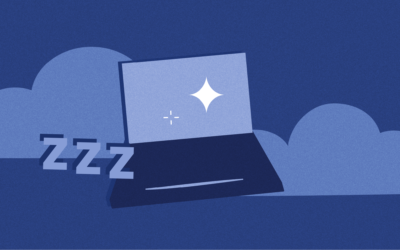Table of Contents
What is cognitive behavioral therapy (also called CBT or cognitive behavior therapy)?
There are a lot of forms of therapy today, from massages to hypnosis. Therapy treatment has been hyped up in many creative ways to solve people’s psychological stresses, traumas, and other mental health problems. Therapy often gets a bad rap for taking too many sessions and being ineffective. But, there is a solid form of treatment that has been proven to be more effective despite taking fewer sessions. This treatment is called cognitive behavior therapy.
Cognitive behavioral therapy, CBT, is a form of talk therapy performed with a therapist or other psychiatric professional. This form of psychotherapy increases your awareness of inaccurate or negative thinking, helping you respond to different situations more effectively. CBT is useful for various issues such as depression, PTSD, stress, eating disorders, a sleep disorder or stressful life situations. Often, cognitive behavioral therapy is preferred because it requires fewer sessions than other types of therapy today. And, it focuses on the present, not the past.
Cognitive behavioral therapy works by changing your thinking pattern. Through CBT, you work together with your therapist to pinpoint the unhealthy or harmful thinking that is causing your mental health problems. The theory behind CBT is that if you can prevent these negative thoughts, you subsequently avoid negative emotions and actions. Through CBT, your quality of life increases as you think more positively and with better awareness.
If you notice that you experience sleeping problems because of stress and anxiety, you are not alone. According to research by Philips (2020), worry and/or stress was reported by 33% of the global respondents as the most limiting factor to a good night’s sleep. In our latest research, 71% of the participants improved on their insomnia complaints in 4 weeks. Click here to learn more about how Somnox can help you achieve a good night’s rest.
Cognitive Behavioral Therapy for Anxiety
Anxiety is one of the common problems that cognitive behavioral therapy has been proven to treat. According to one study from 2015, CBT treatment for anxiety is both efficient and effective. CBT is all about changing your cognitions. For anxiety specifically, CBT is often paired with exposure therapy to achieve maximum results. You learn specific skills connected to the thoughts, emotions, and actions related to the anxiety disorder. Then, you are usually assigned homework to practice these new cognition skills outside. CBT for anxiety usually takes 20 sessions or less.
A study on cognitive behavioral therapy for anxiety in children with autism spectrum disorders demonstrates the effectiveness of CBT in the treatment of anxiety. In this study, each week for 16 weeks, the parents of the children did CBT for 60 minutes a week, and the children did CBT for 30 minutes a week. It was found that 78.5% of the children who did CBT showed improvement through the treatment.
Over the long term of a different study, it was found that most adolescents who did CBT maintained gains over anxiety. Thus, CBT is effective in the short term, and the results are also maintained over a long period.
How does CBT work for insomnia?
Cognitive behavioral therapy for insomnia, CBT-i, consists of several procedures that you can follow for different insomnia-related problems. They all incorporate the basic CBT principal of the connection between thought, emotion, and behavior.
Stimulus Control Therapy
Stimulus control therapy involves reassociating the bed with sleep and not with wakefulness. In stimulus control therapy, you only lie in bed if you are sleepy. You rise at the same time every morning too. Even if it’s the middle of the night, if you aren’t feeling tired, you need to get out of bed. Your brain should be thinking that the bed is only for sleep and nothing else.
Sleep Restriction Therapy
Sleep restriction means that you are limiting the amount of time spent in bed. The goal of this is to prevent waking up in the middle of the night. You track your sleep efficiency so that most of the time you spend in bed is spent sleeping, not awake. You’re given a limited number of hours to be in bed, and that’s all you have to sleep. At first, it’s hard because you probably won’t get more than 7 hours of shut-eye, but slowly that amount increases as you become more efficient with your sleep.
Sleep Hygiene
By improving sleep hygiene, you’re changing lifestyle habits such as smoking, drinking too much caffeine late in the day, and inactivity. It also involves a bedtime routine that gets you physically ready for bed, such as showering, brushing your teeth and writing in your sleep diary.
Sleep Environment Improvement
Sleep environment improvement means creating a comfortable sleep environment: dark and cool, no TV, no bright lights, and little noise. You remove anything that could bother your sleep.
Relaxation Training
Through relaxation training, you calm your mind and body through meditation, breathing, and progressive muscle relaxation. Relaxation training helps you get in the right place with your mind and body for sleep.
Remaining passively awake
Remaining passively awake means avoiding any effort to fall asleep, making you less worried about trying to fall asleep. Not being worried about better sleep makes it easier to fall asleep.
Biofeedback
Biofeedback involves gaining awareness over the body by using technology. Through biofeedback, you can observe things such as your heart rate and muscle tension. Then, you can use this feedback to help identify patterns linked to your sleep habit.
Sleep Robot
This Sleep Robot helps you fall asleep by guiding your breathing, promoting a natural sleeping position, and playing relaxing music. It works really well as an easy sleep aid to help you fall asleep. The Sleep Robot can be considered as a branch of relaxation training and sleep environment improvement. Our validated and patented, drug-free sleep-aid uses continuous and precise breathing simulation to quiet the racing mind assisting you towards deep restorative sleep. Put your hands on the Somnox Sleep Robot and breathe along with the physical sensation of the falling and rising of the breathing pulse. Specifically designed to help you be at your best every day.
Is CBT effective for insomnia?
CBT is proven to work for insomnia, especially when compared to other sleep aids. There are numerous studies and institutions in support of this.
According to the Harvard Health Blog, CBT-i gives you the tools to manage your insomnia disorder better. Thus, you don’t have to take any sleep medication or sleeping pill that may have unwanted side effects, nor do you have to waste your money on sleep medicine.
In addition to this, a meta-analysis study conducted on children and adolescents also found that CTI-i is effective for insomnia.
And, CBT-i is also efficacious, as proven in another study on primary insomnia, which is insomnia not caused by other health problems.
What is the best therapy for insomnia?
The best therapy for poor sleep is CBT-i. As we’ve already explained in the last section, CBT-i is scientifically proven to be efficient and productive.
Compared to other forms of therapy, CBT-i doesn’t cost as much money as the sessions only last for a short time over a few weeks. There is little risk in doing CBT-i.
Many prefer cognitive behavioral therapy for insomnia not only for its time and cost-savings but also for the tools it provides for a lifetime. It teaches you how to cope with insomnia and how to deal with it on your own. The ability to deal with insomnia an extremely valuable skill that you can take with you everywhere. This minimalist approach to therapy for insomnia has all of the benefits that one could need for becoming an insomnia treatment.
How long does it take for cognitive behavioral therapy to work?
The amount of time it takes for CBT to work depends from person to person. According to the UT Medical Center, though, you should see improvement by the end of the CBT sessions.
It’s important to remember not to go into CBT with too high of expectations. CBT will most likely help, but it doesn’t mean that it won’t take a long time or that you won’t relapse. CBT enables you to deal with new problems that arise and cope with them most effectively. If you go into CBT with the right mindset, then it could definitely help you.
How do you do CBT for insomnia?
CBT-i works upon the same CBT principle that our thoughts, emotions, and behavior are linked together. For CBT-i, you’ll probably go to a therapist’s office for your CBT-i sessions. Then, you will work together with your therapist to figure out how you can adequately battle your insomnia symptoms and how you can improve your sleep quality and total sleep time during the night. CBT focuses more on the present and less on the past, so don’t expect the stereotypical childhood trauma recollections with your therapist.
Often, you will have assignments or homework to do on your own to practice these new thinking methods to change your cognition. You can refer back to the CBT-i procedures that we’ve gone over for an idea of what you’ll have to do at home.
How long does it take for CBT for insomnia to work?
As with CBT in general, there is no sure way of knowing how long it will take for CBT-i to work. You should see some improvement by the end of the sessions with the therapist, but it could take much longer than that to cure your insomnia fully. Everybody is different, and everyone will progress at different paces.
Key takeaways
Cognitive behavioral therapy is a form of talk therapy that proves to be more beneficial than other types of treatments and remedies despite its simplicity and short-term commitment to sessions. CBT is so effective because it challenges the root of mental health problems: the negative thought. A negative thought can spark negative emotions and negative behaviors, and CBT works to nip this in the bud.
For insomnia, CBT is a great tool to manage and cure it. A notable aid for CBT-i is the Sleep Robot, which could help overcome your sleep problem. Overall, a combination of CBT-i and the Sleep Robot give you all of the tools that you need to cure your insomnia.


